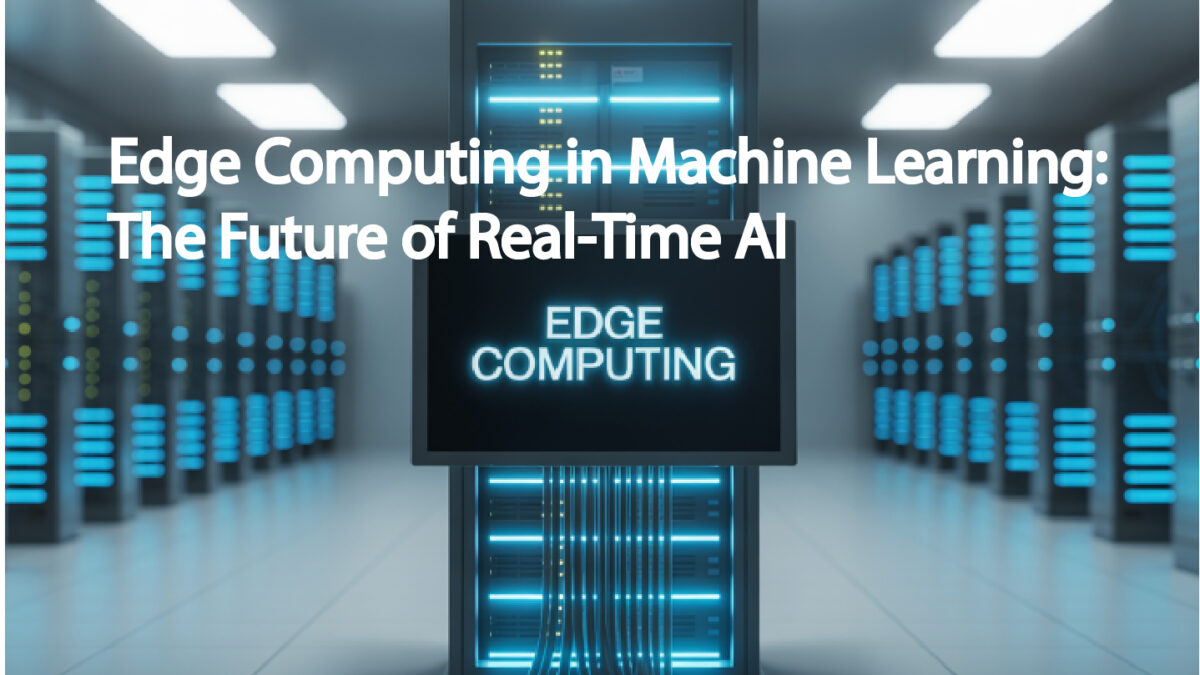
Edge Computing in Machine Learning: The Future of Real-Time AI
Edge computing in machine learning is transforming the future of real-time technology. Imagine a scenario in which your security camera recognises suspicious behaviour without uploading information to a remote server, or where your wristwatch detects irregular heartbeats before you ever realise something is amiss. Welcome to the cutting edge of computing, where fast, real-time decision-making meets the power of machine learning.
Imagine a scenario in which your security camera recognises suspicious behaviour without uploading information to a remote server, or where your wristwatch detects irregular heartbeats before you ever realise something is amiss. Greetings from the cutting edge of computing, where fast real-time decision-making and machine learning collide.
What is Edge Computing?
The idea behind edge computing is to relocate data storage and processing capacity to the “edge” of the network, which is where data is generated. Edge computing analyses data locally on devices like smartphones, IoT sensors, drones, or smart home appliances rather than transmitting it all the way to a cloud server, which may be thousands of miles distant.
This change significantly lowers latency (the time it takes for a data transmission to start), enhances data privacy, and uses less bandwidth.
When Machine Learning Meets the Edge
Traditionally, cloud computing, which offers a wealth of computer resources, is where machine learning (ML) models operate. Device-generated data is sent to robust data centres for processing, after which the user receives the findings. Although this centralised method is effective in many situations, it is ineffective in:
- Speed is critical: Autonomous cars and drones need split-second decisions.
- Privacy matters: Healthcare data, financial transactions, or personal videos shouldn’t always leave your device.
- Connectivity is unreliable: Remote or mobile environments where internet access is limited or intermittent.
By executing models locally on devices, enabling real-time responses, and lowering reliance on cloud connectivity, edge computing improves machine learning.
Benefits of Edge Computing in ML
- Ultra-low latency: Processing data at the edge means results are available in milliseconds, crucial for real-time applications.
- Enhanced privacy and security: Sensitive data remains on-device, lowering the risk of breaches.
- Offline functionality: Devices can operate intelligently even without internet access.
- Cost savings: Lower data transmission means reduced cloud storage and bandwidth costs.
Real-World Applications of Edge ML
The fusion of edge computing and machine learning is already transforming industries:
- Healthcare: Wearables like smartwatches and medical sensors analyze vital signs continuously, detecting anomalies like irregular heart rhythms and alerting users or doctors instantly.
- Smart Cities: Edge-powered cameras and sensors help manage traffic flow, adjust street lighting, and monitor environmental conditions in real time, reducing congestion and energy usage.
- Agriculture: Drones equipped with on-device ML assess crop health mid-flight, enabling farmers to make rapid, informed decisions about irrigation or pest control without waiting for cloud processing.
- Retail: Smart shelves detect stock levels and shopper behavior instantly, automating restocking and personalized marketing without relying on central servers.
How Edge ML Works: The Technology Behind It
By reducing big, resource-intensive models into smaller, more manageable versions that operate effectively on constrained hardware—typically with limited CPU, memory, and power—machine learning may be deployed at the edge.
Popular frameworks and tools making this possible include:
TensorFlow Lite: An open-source deep learning framework optimized for mobile and embedded devices.
ONNX Runtime: A cross-platform engine that allows you to run ML models trained in different frameworks efficiently.
NVIDIA Jetson and Intel OpenVINO: Hardware platforms and SDKs designed specifically for accelerating AI inference at the edge.
Similar to pruning a bonsai tree to preserve its essence while making it manageable, developers use pruning and quantising models to guarantee that they maintain high accuracy while fitting into small spaces.
The Future of Edge Computing in Machine Learning
By 2025, there will likely be 75 billion IoT devices linked, making edge computing more than simply a choice—it will be essential. The massive, constant deluge of data produced worldwide is too much for centralised cloud systems to manage alone.
Devices’ “smartness” will soon be based on their own capacity for learning and local decision-making rather than just cloud processing. Edge computing will drive the next wave of innovation, from autonomous drones that can negotiate challenging terrain to augmented reality glasses that can quickly analyse your surroundings.
Final Thoughts
Machine learning is changing as a result of edge computing, which is also making intelligent systems more durable, quicker, and private. Investigating this area gives developers and data scientists the chance to create cutting-edge apps that respect user privacy and react in real time.
Whether you’re interested in robots, smart cities, healthcare, or agriculture, edge machine learning is a field worth exploring.